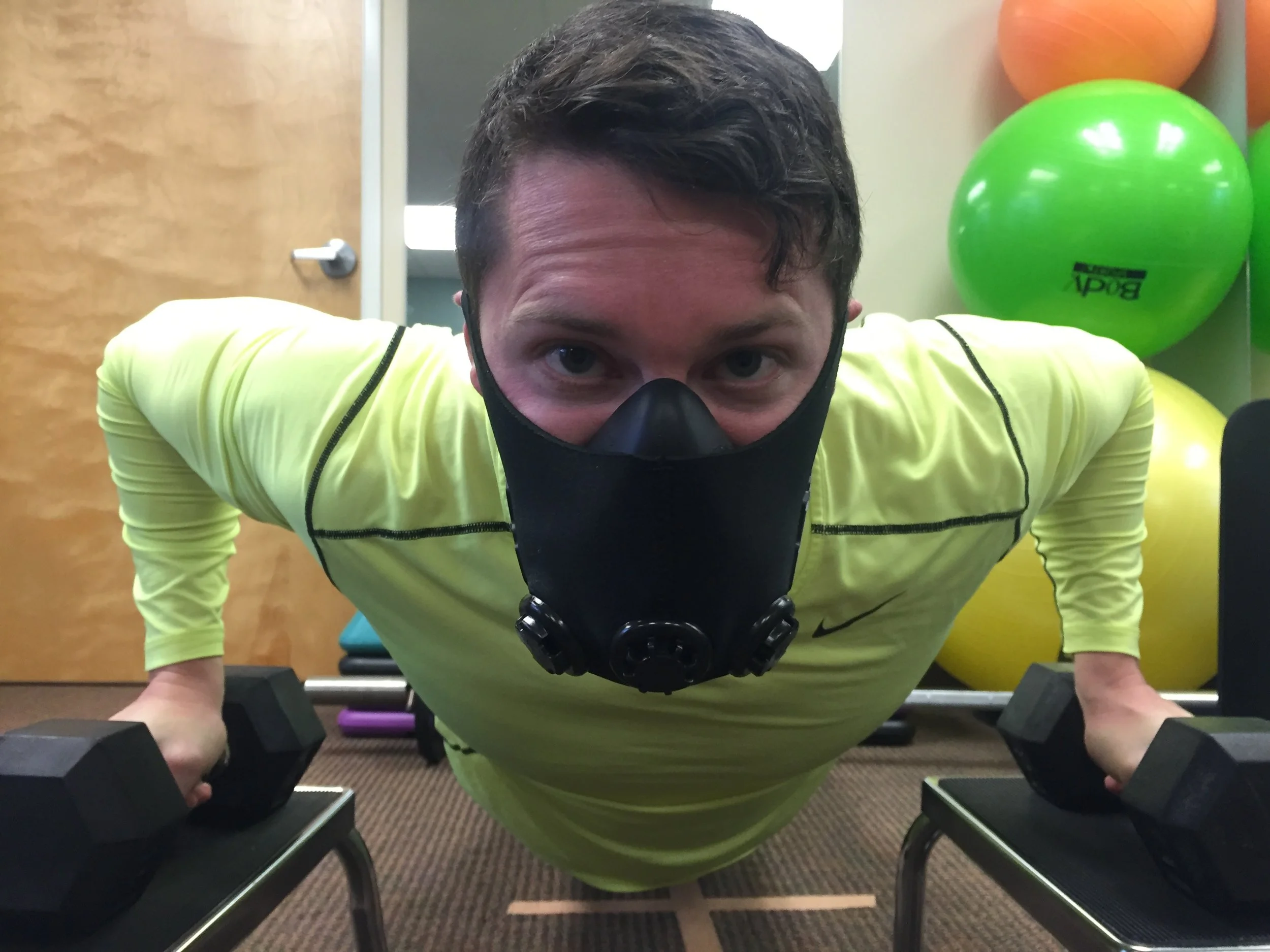Author: Bryan Lang, PT, DPT, MHA, CSCS, Cert.DN: Doctor of Physical Therapy, Business Owner, Associate Professor, and Blog Contributor. Explores common client questions, helps find solutions for every day functional health concerns, and interprets difficult theories in healthcare rehabilitation. Committed to life-long learning and education. Learn moe about Bryan on Google+ .
If you spend time at the gym, you may have seen someone looking like Bane from Batman running or lifting weights. That person isn’t making a fashion statement, he or she using an altitude training mask.
Why Are They Doing It?
The altitude training mask is designed to simulate training at higher altitudes. In theory, training mask will make you breath deeper and improve respiratory muscle conditioning, but the reason why athletes train at higher altitudes goes much deeper than that. When people live in higher altitudes, their body produces more of a glycoprotein hormone called erythropoietin or EPO in the kidneys. This hormone controls red blood cell production. The more EPO, the more red blood cell production. With more red blood cells, more oxygen can be taken up by your blood and delivered to muscles. Oxygen is critical for muscles to continue to work at high demands. When you live at higher altitudes, your body has to make more EPO because the oxygen is thinner in the air. More red blood cells are produced to supply enough oxygen to your muscles. The bottom line is that living at higher altitudes can theoretically improve cardiopulmonary performance which means an athlete can do more work without fatiguing as quickly.
Higher Altitude = More EPO = More Red Blood Cells = More Oxygen Going To Muscles = Less Muscle Fatigue
Does it work?
In order to increase your red blood cell count, your body needs to be at a higher altitude level for most of the day. This is why the consensus theory right now in high performance training is to “live high and train low.” Athletes live in high altitude levels and then have quality training sessions at low altitudes. Training while at high altitudes is another type of performs that has been attempted, but it hasn’t shown the results like “live high and train low” has. So, if you’re not wearing the altitude training mask at all times during the day, it’s probably not doing much for long term effects. A study in 1999 took 6 elite female cyclists and had them sleep for 12 nights in an altitude chamber simulating 2650 meters (8694 feet). The conclusion was that even after 12 nights of exposure, it was not enough to increase the amount of hemoglobin (these are molecules on blood cells that oxygen can bind to) in the body. Another study showed that there was an effect in improving athletic performance after athletes stayed at 3000 meters (9842 feet) for three weeks. However, even with that study, it showed that the effects of the training wore off in two weeks.
In 2012, a study questioned altitude training altogether. It stated that there has been research that live high-train low may show improvements in performance for endurance athletes, but there were no studies that accounted for the placebo effect. The study was genius in design. One group trained at low altitudes and spent 16 hours a day for four weeks in a room simulating a high altitude environment (3000 meters or 9842 feet). The other group trained at the same low levels, and thought they were also in a room for four weeks simulating a high altitude environment, but really the room was flushed with normal air instead. After the four weeks of training, all of the results showed that there was no improvement of endurance performance between groups.
Bottom line
When you use the training mask, you will fatigue faster with your exercises. It will also force you to breath more deeply. However, using the mask goes against the general consensus for altitude training. Instead of living high and training low, you’re living low and training high. As a result, the generally short time frame you use the mask (since people generally only use it while working out) won’t provide enough carryover to change hormone production and overall cardiopulmonary output for long-term gains.


